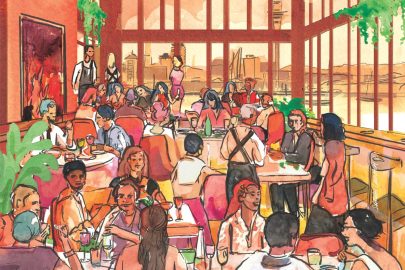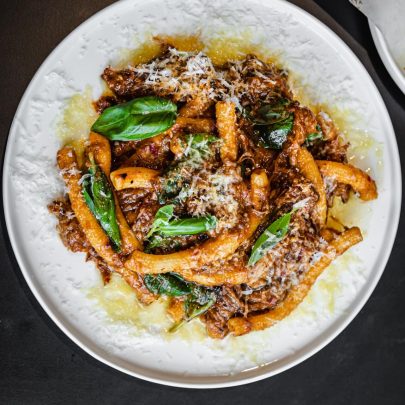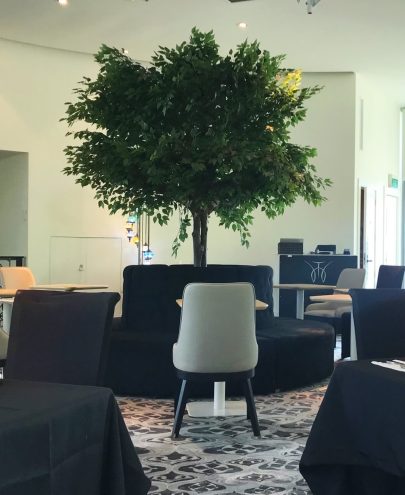Aug 19, 2016 Restaurants
Kent Baddeley used to be the most acclaimed chef in the country. So, asks Simon Wilson, what’s he doing in an obscure little restaurant on the outskirts of Hastings?
Photography by Richard Brimer. This article was first published in the June 2016 issue of North & South magazine.
At his first restaurant, the dining room of the Sandown Park Hotel in Gisborne, where he was aged 19 and still on trial, “executive chef” Kent Baddeley sent out a plate of four oysters on the half shell, with a chardonnay vinegar and tiny leek spears. Immediately, a customer barged into the kitchen carrying the plate.
“This is the trouble with you gay Swiss c**ts!” he shouted at Baddeley. “In our country, we eat oysters raw or battered! And you serve them by the dozen or the half dozen!”
Baddeley told him to try eating before he complained. He said this was the future of food and the man would love it so much he’d be embarrassed he’d said anything. Then he told him that for the rest of his life, the man would tell his friends the story about this day, against himself, and every time he did his friends would laugh at him. Also, he added, he wasn’t gay. Or Swiss.
It was 1974. Baddeley met the man again decades later. His predictions had all come true.
It was lunchtime on a hot Friday last summer, and Kent Baddeley, now 61, stood in the kitchen at his restaurant, Ten Twenty Four, olive-green tunic buttoned, apron tied, pants riding low under his sizeable torso. He was distracted: he needed strawberries for a wine festival he was cooking at the next day and he couldn’t get any.
Out in the dining room, a table of three and a table of eight sat waiting. They could see him and he could see them, because he has removed most of the wall dividing the two rooms. Donovan Frankenreiter played quietly on the sound system: middle-of-the-road surfie music.
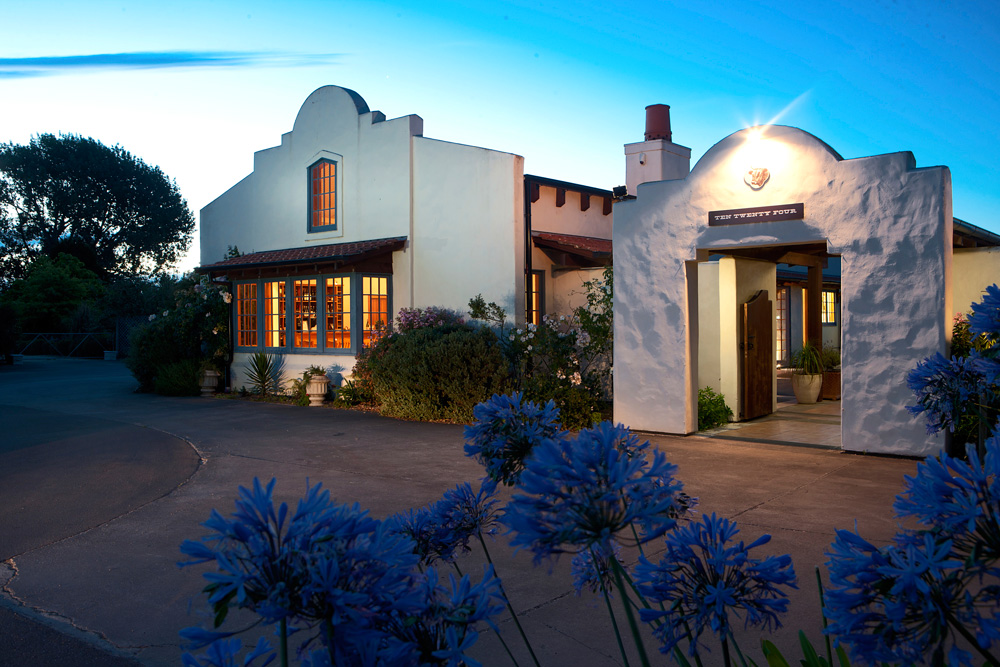
Ten Twenty Four is out of town and set back from the road, with fields all around. If this were France, it’d be one of those cute little Michelin-starred places deep in the Provence countryside. But it’s Hastings and the style is faux-Arizona: plastered walls, terracotta tiles, big wooden beams holding everything up. It’s dry and weedy, with an arid courtyard and dozens of plants struggling in their clay pots.
“Everything’s not quite finished,” Baddeley explained, although in the courtyard it felt more like everything was not quite abandoned. Two more customers drifted in and asked for a degustation. “Two degos,” he mused. “What do I want to do?” He opened the fridge door, took out a bowl of fish fillets and sniffed at it.
The dining room is white, with a white-framed ceiling lined with corrugated iron and hung with wrought-iron candelabra. Wooden furniture, the tabletops painted white. The kitchen is also white.
Baddeley sang the Cream song, off and on, during the days I spent with him: “In the white room with black curtains near the station/ Blackroof country, no gold pavements, tired starlings/ … I’ll wait in this place where the sun never shines.” Was it special to him? Yes, it was.
He said, “I’ve always thought the black curtains are the windows at night.”
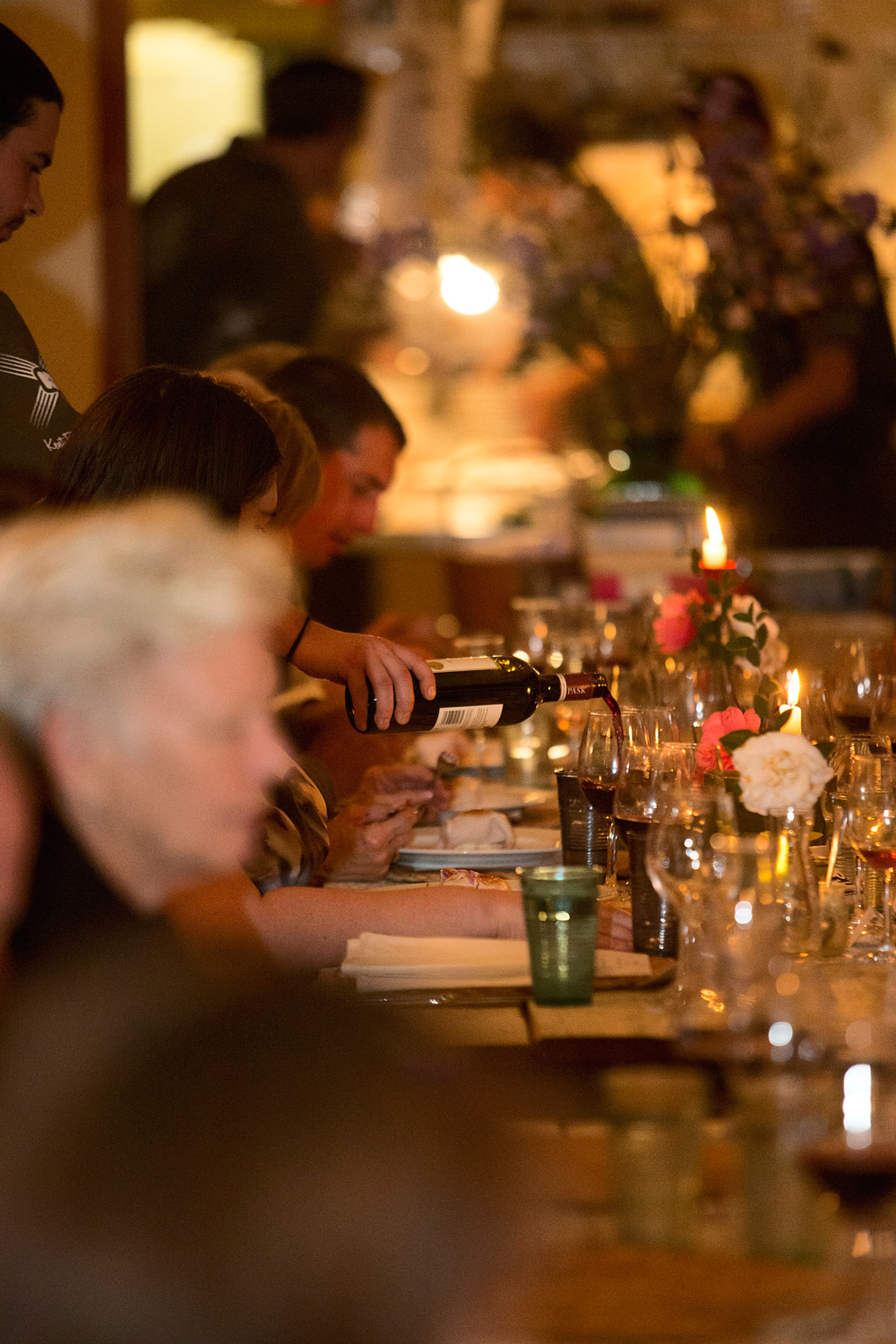
He put the fish back and diced a squid tube, placing it in a bowl with lemon juice, raw diced shiitake, purple basil leaves, sliced pork cheek and some pork jus, some crumbled gingernut biscuit and a squeeze of his proprietorial Kent yum soup. (“Well, why would I make tom yum?”)
He tasted it. “Oh well, that didn’t work.” He threw it out.
He rarely tastes. Stocks and sauces, yes, but not the rest. Most times, he said, he already knows what things taste like. There’s a new menu each day, and a new dego line-up too. Ask the waitstaff what a dish tastes like and they can’t tell you: no one’s tried it until you do.
He got on with the mains for the big table. There were two people with him in the kitchen: Michael Hadland, who did the dishes and fetched; and trainee chef Takahashi Masanori, known as Taka, who prepped in a corner. Baddeley did all the cooking.
His son, who is a trained chef, works there sometimes too. “He comes and goes. It’s a father-son relationship, you know? Not a chef-sous chef one.”
Five fish, roasted with heirloom tomatoes; one vegetarian dish, centred on an enormous fig; one chicken, served in a filo parcel laid over a coarse bread sauce made with onion and a heavily reduced, very sticky chicken stock. And one lamb neck, which Baddeley pulled from the oven, glazed with venison sauce and decorated with red-veined sorrel. It was as big as a small ham hock. He added a brûléed onion with a thick caramelised crust, served in a half skin. A little potato and, a lovely touch, blueberries. When the customer split the thing lengthwise, soft dark meat fell from the knuckles.
Hearty fare, presented on large pottery platters with big smears, edible flowers and artistic flourishes. Every dish rich in flavour, impeccably cooked, producing a string of compliments from the customers: “Amazing” and “Wonderful” and “You are so courageous”.
Baddeley’s food was revolutionary in the 1980s and 90s, and he’s proud not to have changed. That fig had sprigs stuck in it. Some of the platters are half a metre wide. “This would work in Auckland, wouldn’t it?”
No, I told him. You cook like an angel and people in Auckland would fall about gasping with pleasure if they ate it, but it doesn’t look cool and no one would come.
He said, “My plating will never change. That’s my DNA.”
In some quarters, he’s renowned: a few years back, he turned down a million-dollar offer to work in Shanghai. “A guy stuck his head through the pass at Diva [the Havelock North restaurant he was then running] and said, ‘As soon as I had that scallop…’
“He said he was setting up a string of superstar chefs in Shanghai and, he told me, ‘Your name keeps coming up.’” Baddeley would earn $1 million a year, live there for nine months and spend three months back home.
“It was amazing, I was deeply flattered. I told him it means a lot.”
Why did he turn it down?
“I don’t want to live in fucking Shanghai.”
Now he’s lucky if he gets 20 diners a night. Mind you, he’s got an answer to that. “We’re on a different path from being full all the time.”
The first course of the degustation was confit eel with walnuts. All sourced locally. “Everything’s grown within five kilometres.” His eggs are not free range, but they are SPCA-certified. “That’s much better. People don’t understand.”
He’d boiled an ox tongue, an enormous thing as big as your head, in a brisket and silverside consommé made with shiitake mushrooms grown on logs in the Esk Valley (which is 30km away, although I don’t think anyone’s counting). He served the tongue with wontons, cardamom, flowers and his Kent yum soup, very thick. Hot food on a hot day and, as I discovered later, so tasty: the pastry strong and crisp, the gravy spicy, the meat soft and sweet and perfectly matched with a chardonnay.
He said, “I suppose I should have done a salad, with the weather and everything.”
He didn’t really care about that. “The customer is not always right,” he said. “But the customer must always be satisfied.”
Then, for the table of three, he put out only two mains. He’d forgotten the fish.
Everybody stopped and stood there in the kitchen, two waitstaff and three kitchen staff, nobody quite looking at anything. “It’s my mistake,” Baddeley said. Head waiter Tom Nancarrow and his offsider Eden waited. “But you’re both looking at me doing two dishes. Nobody said a word.” He made the fish, sent out an apology. All the customers loved everything.
By 2pm, he still didn’t have any strawberries for the festival and the elastic on his pants had almost perished.
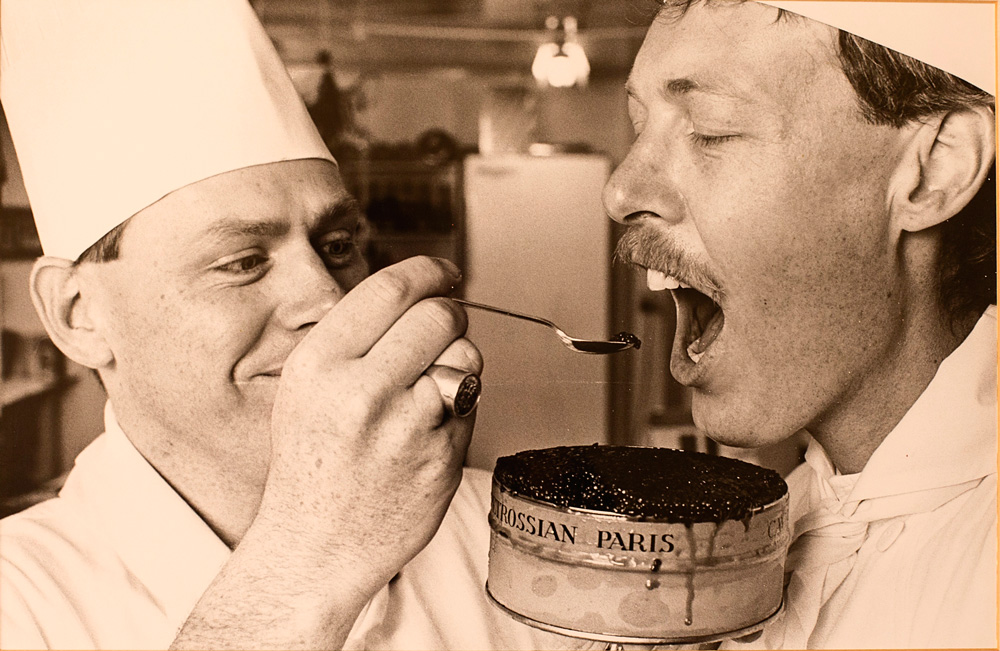
There are 6000 recipes in The Repertoire, the guide to “modern” French cuisine produced by a disciple of Auguste Escoffier in the early 20th century, and Baddeley claims to have cooked them all. He did it, he told me, between the ages of 10 and 14.
Strictly speaking, he had to adapt. Not all the ingredients of haute cuisine were available in New Zealand in the 1960s, let alone in his grandmother’s kitchen, where the young Kent did his cooking, because “she wouldn’t have anything that didn’t come off the property”.
Baddeley’s grandparents ran the Bridge Hotel at Matawhero, 7.5km out of Gisborne. Granddad, Harry Baddeley, was a horse whisperer who believed in good whisky: he would fill every bottle in the place with 24-year-old McCallum’s. The pub was the bank and the post office and people paid their debts with crayfish. If the toddler Kent went missing, chances were they’d find him asleep under the blanket of one of the kuia sitting along the wall of the bar.
Grandmother Rona worked till she was 85. Twice a year, she was invited to speak on the local marae – a remarkable honour – and at her funeral 3000 people turned up and surrounded the church. The haka was “ferocious”.
And from Rona and Escoffier, Baddeley learned to cook. Sauces. How egg yolks get thicker and thinner, and what to do about it.
He hated the chickens. He sat up on a fencepost and shot them with a slug gun, until his grandfather came and whacked him over the ear. Not for shooting them, but for using the wrong kind of gun: the pellets would give them all lead poisoning. Granddad gave him a .22.
“Good old Gizzie. There were 64,000 people there when I was at high school, now it’s 24,000. I’ve often said, if everyone went back, Gisborne would be an amazing place.” Baddeley was friends with Witi Ihimaera’s brother, Derek; friends with a guy who’s now “the lead physicist in Britain for the Mars project”.
He started in the local bank, which sent him, at age 17, on a boat to London. He was a 70s swinger with hair down his back, wearing a seersucker jacket, flares, four-inch heels (he was already six feet in his socks) and a bow tie. There were 1800 passengers and 80 per cent of them, the way he remembers it, were women under the age of 30. He arrived penniless.
The work in the bank didn’t last. He pulled pints in a pub with topless go-go dancers and got spotted by Harry Oppenheimer, the South African mining magnate who also owned 200 hotels. “A young man with energy,” Oppenheimer said to him. “I want you.”
In Durban, the magnate took him to the Carlton Hotel, then the biggest in the world, and invited him to choose any job he wanted. He picked a cocktail bar, working for a resentful man called Udo Schwendenwein. “Make me a daiquiri,” said Schwendenwein. Baddeley made him the drink.
“Shit, that’s delicious,” said Schwendenwein. “Where did you learn that?”
Baddeley said, “My father thought he was Frank Sinatra.” The old man wore a silk dressing gown and drove around with a cocktail kit in his car, just in case he found himself at a party, which he often did. Kent had been making pitchers of daiquiris for him since he was 10 years old.
And surfing, too. Durban was Gisborne on a world scale. “I surfed all day. I lived like James Bond. Surfing, touring, working. I loved my life.” He was in Mozambique with a journalist he was dating when they got caught in a firefight between the government and the rebel army Frelimo. More scary than exciting, really. He came home.
Back in Gisborne, still not 20, Baddeley “bullshitted” his way into that job at the Sandown. He told the boss, “I’ll double your turnover, halve your costs, and I want half the profit you’ve never made.” He told me, “Same speech I’ve made every time I went for a job.”
He didn’t have chef’s whites so he got hold of a dentist’s jacket, with short sleeves. He told the staff, “Do everything exactly as you usually do and I’ll tell you when to change.”
One of the chefs asked him how he wanted a piece of fillet cooked. “‘What did I tell you? Weren’t you listening?’ So the guy cooks the steak, and I’m watching over his shoulder, going, ‘Right, that’s how you do it.’”
Even if you’re the boy who cooked his way through Escoffier, you don’t necessarily know how to do it in a hotel dining room.
He met a girl called Jill. He knew as he shook her hand that she was the one, and he says she knew it, too. They got married and they’re still married, living in a sprawling bungalow in Havelock North, with their son and a yappy dog. “I’m not sure we have anything in common. She doesn’t understand a single decision I make. I don’t understand her, either. It’s an unusual bond.”
Jill used to work with Baddeley in the restaurants, but now she’s in real estate. She’s the breadwinner. There’s a mature magnolia, a wattle, a Japanese elm. It’s all very gracious and established.
“A friend of mine propositioned her once. He said, ‘What would you reckon if I made an advance on you?’ She said, ‘I’d punch you in the face.’ She’s a hard case. We love each other dearly.”
The Sandown was a Lion hotel and Baddeley worked his way up through Lion’s new Cobb & Co set-up: family restaurants that sold more booze than lounge bars and more food than the old hotel dining rooms. At the St George in Wellington he spotted an enterprising young man called Ian Garner and promoted him to head chef.
A stretch in Rarotonga followed, where he transformed the THC hotel with a locally sourced menu and local workers before finding himself in a bitter dispute with the boss. After two years of legal wrangling, Baddeley and Garner, now firm friends, heard about a little cottage on upper Willis St in Wellington. They decided to open a restaurant.
Four banks turned them down. At the fifth, the BNZ, they found a banker who believed their line about creating the future of food but could only arrange a loan “off the books”. It was 1983 and they were both still in their 20s.
Petit Lyon opened to little fanfare and Baddeley remembers sitting with Garner on the stairs, on the second night, waiting for customers.
Then came the Seafood Industry Awards, judged by the lion of Wellington restaurant critics, David Burton. Petit Lyon, which offered dishes like kina soufflé with the spikes still on, won four categories, to the great confusion of most people in the room. Des Britten, the doyen of Wellington dining, owner/chef of The Coachman, TV personality and cookbook writer, came over and “stuck his face up close”.
“Who are you guys?” he demanded. Baddeley gave him the spiel: “We’re going to be the best chefs in the country.” Britten snarled back, “That’s me.”
Michael Guy gave Petit Lyon a 97/100 rating and made it his Restaurant of the Year. Britten, who became a reviewer himself when he retired from The Coachman to become a priest, consistently rated them near the bottom of his lists.
From 1983 to 2001, Petit Lyon set the pace. They moved from Willis St to Courtenay Place, to Vivian St and then back to Willis St. They didn’t have a menu, asking diners to trust them, and each night served up a series of beautiful, intricately realised, astonishingly flavoursome creations. It was fine-
dining degustation at a time when few people knew what that meant. They foraged for foods before anyone else thought to bother. They reinvented what dinner could taste like and look like and, just as importantly, how special an evening in a restaurant could be.
The big influence was Michel Guérard, a French chef who championed culinary creativity and repudiated the butter-laden haute cuisine of most French restaurants with his “cuisine minceur”.
“Guérard changed everything. He started to crush and squeeze. He’d say, ‘Let’s look at an orange. How do we eat everything on it without showing anyone it’s an orange?’”
But can you eat everything on an orange? “No. But we tried.”
They were the darlings of the corporate world, the Fay Richwhites and the Bob Joneses. Future star chefs like Martin Bosley and Rex Morgan worked for them. Al Brown, then known as Alistair Brown of the newly opened Logan Brown in Vivian St, a few blocks away, came to Baddeley for advice.
Baddeley doesn’t remember it fondly. “He rang me and he said, ‘Have we met? Your name is the only one we hear.’” Not long after, David Burton awarded Brown “dish of the year” for a horseradish, Yorkshire pudding and scallop concoction. “I’ve always thought that was my dish,” said Baddeley. “I think Burton knew it.”
Still, in those days it was Petit Lyon that won more awards than any other restaurant in the country.
After service, they partied. “Maybe half a dozen beers, half a bottle of cognac. And martinis.”
And yes, after service they partied. “Maybe half a dozen beers, half a bottle of cognac. And martinis.” They were all fond of the martinis. In the 90s, they opened a second restaurant, Sol, introducing Wellington to the idea that Mexican food didn’t have to be nachos. “I was so busy,” he said, “one night I threw up and collapsed.”
Then, after 19 years, wine and food entrepreneur Graeme Avery lured him away to Hawke’s Bay.
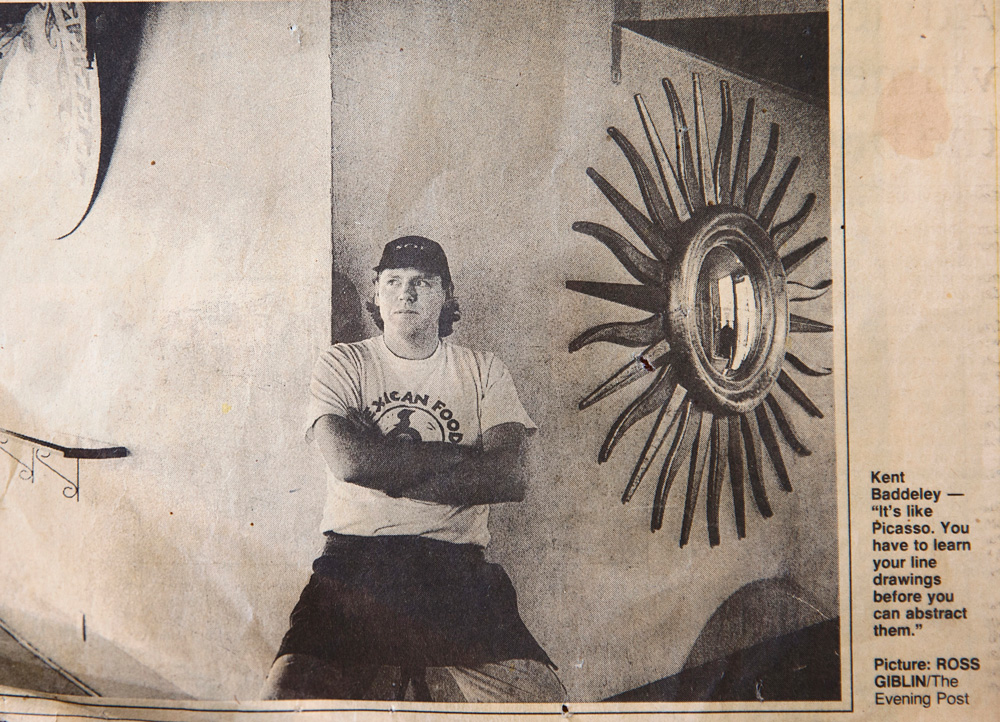
Baddeley stays at a place for two years or less, unless he owns it. He did two years for Avery at Sileni Estates, before they fell out. “I helped give that business a heart, but it couldn’t be me. The heart needs to be Graeme Avery.” He made a point of declaring his admiration for Avery’s entrepreneurial zeal; and when I talked to Avery, who was knighted in 2014, he made a point of praising Baddeley’s skills as a chef.
Baddeley’s been all around the Bay. Two years at Clearview Estate, doing “360 covers in three hours”. Less at Casa Lavender; also Bradshaw Estate, then Shed 2 in Napier’s redeveloped dockside bar precinct at Ahuriri (“Kent yum soup was invented there”), then Diva, a big restaurant in the Havelock village that he kept 98.5 per cent full.
He did an uncharacteristic four years at Parehua near Martinborough: “I sorted that out. When I left, five or six hundred k of income went with me.”
All the while, as the places and the people he worked for fell away, the relationship with Ian Garner endured. Until it didn’t. They fell out over money and other stuff, and for Baddeley it left a bitter taste. Now he’s on his own. He owns Ten Twenty Four, hires young people and trains them, staying calm when they make mistakes. “It is what it is,” he says, whenever something goes wrong.
He champions local produce and challenges the other chefs of the province. “Everyone in the Bay is following me. They’ve all got my plates, they’re all using flowers, all using short ribs, all getting funky.”
He reckons he’s fed five million people. “I’ve done the math.” Famously, he once did 3000 banana soufflés, served in green skins with the soufflé piped in, in a tent on the Takapau Plains in central Hawke’s Bay. “Everyone raved.” Ben Shewry, the New Zealand-born chef at Melbourne’s Attica and right now the most acclaimed Australasian chef in the world, “credited that dish [as a big influence on him] when he was getting established”. David Griffiths, formerly at Vinnies in Auckland and now of Mister D in Napier, “talked it up like it was the Second Coming”.
Who did Baddeley rate highest? Simon Wright at The French Café. “He’s Michelin three stars.” In his study at home, he pointed out two books. One was by René Redzepi of Noma in Denmark, a leader of the foraging movement. The other was by Peter Gilmore, of Sydney’s Quay. “He’s doing the same stuff.” Same as Baddeley, he meant.
One time, he had a customer so enamoured of his fish en papillote, he declared it the best pastry he’d ever eaten. Papillote is buttered paper.
He’s famous in Japan. “Locals bring their overseas VIP guests. The guests already know about us, but the locals haven’t been before.” One Japanese guest got out his iPad to show a clip from primetime TV of Baddeley and the restaurant. “He was very excited.”
He gave me a courtyard tour, pointing out the edible flowers, the edible seedheads. He was also growing little black olive dwarf peppers. “This is what excites me. They’re beautiful. I can create a dish inspired by this. Tiny peppers.” We headed into the cornfield next door, where he picked a tiny ear of corn. It was crunchy and slightly sweet.
He’d like to grow more. “You come to the Bay, and what you discover is they’ve got everything here: the produce, the fish, the meat, but you have to go and find it. Nobody’s going to ring you, nobody’s going to come and see you.”
He took me to a market garden, one of his suppliers. It was 11am, baking hot, and the few staff we met were hiding in the shade or slouching around as if they’d been beaten. It was like being in True Detective. Not just because of the heat; it was the absence of any desire to help. “This guy says to me, did I want any peppers? I said, ‘Yes, don’t ask me again, I want this much every week.’ But nothing ever happens.”
He brought Nadia Lim here. “She bought up all the tomatillos. She came to my restaurant, she loved it, she said to me, ‘I’ll be stealing that.’ I said, ‘Don’t tell me. At least you’ll be calling it a Kent Baddeley dish?’ She said, ‘I don’t think I’ll go that far.’”
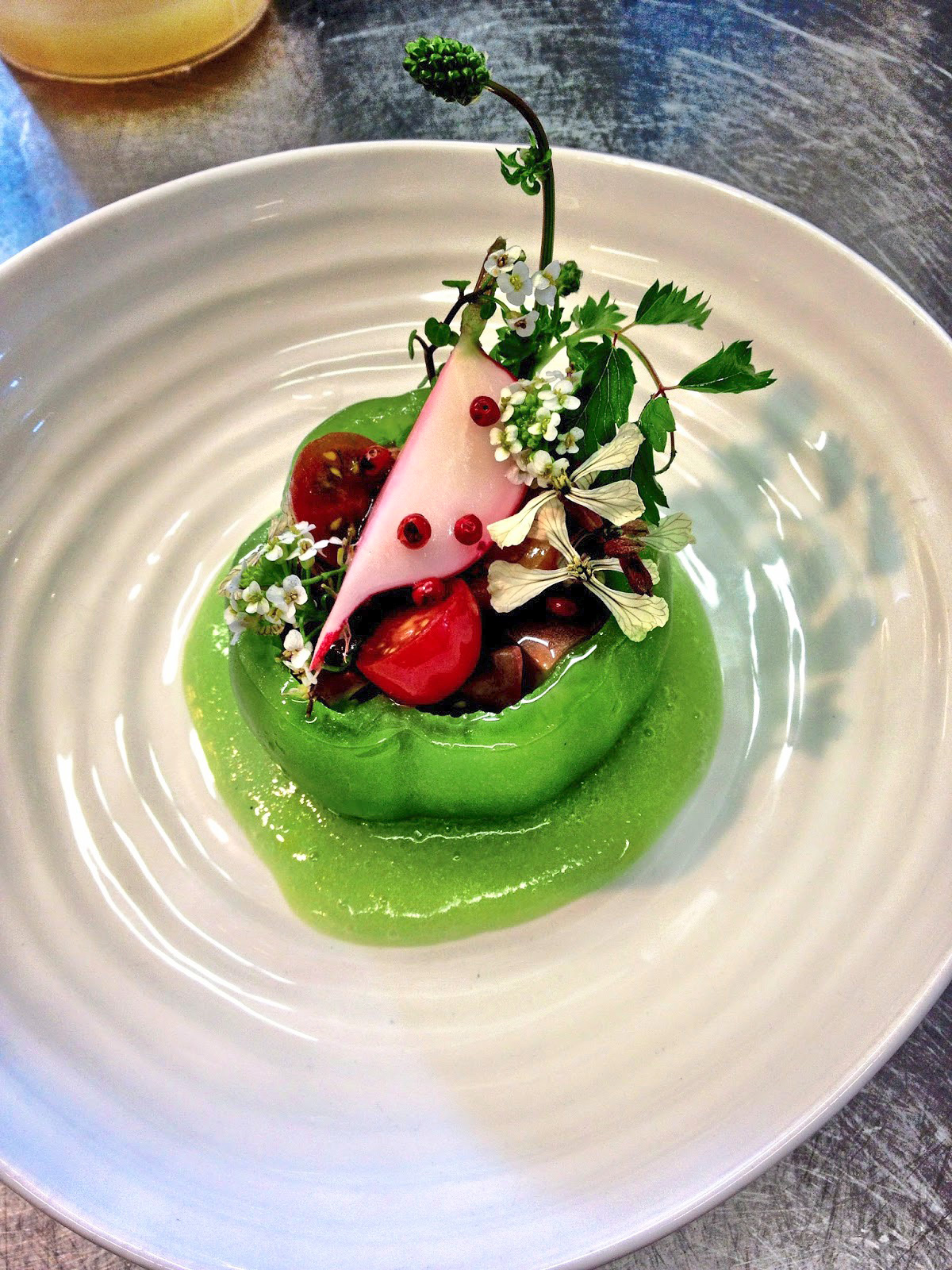
Saturday: the day of the wine festival, one of those events where people shuttle from one winery to the next, listening to music, eating and getting drunk.
The restaurant crew arrived at the winery around 10am in two or three beat-up old cars: Tom, Taka and Michael, and two teenagers, Laura and Annabelle. Tom supervised the set-up, which didn’t take long, and then they stood around waiting for Baddeley. He had all the food, and he was still out there somewhere in the fast-rising heat, looking for strawberries. He’d finally found some, late on Friday afternoon, but now the deal had fallen over.
“It happens all the time,” said Tom.
Everyone had pulled pork: it’s popular, tasty, easy to make in bulk. Other wineries were doing sliders. Baddeley was using his pork as part of a four-course degustation on a plate. Everyone else got the customers to line up and take away their food. Baddeley had “table service” – with Laura and Annabelle taking orders and delivering the plates. Tom said, “Kent doesn’t want a queue. Our philosophy is service. We don’t want to change that.”
Baddeley arrived with strawberries. He’d bought them in a supermarket, took the day’s entire stock. He didn’t say anything, just got busy chopping peppers.
Taka fired up the barbecue, Michael grated carrot, Tom poured Te Koha Feijoa, a non-alcoholic feijoa wine, into little plastic cups.
For the dego, the drink would have dry ice pouring out the top; the veges were going into ceviche, a raw fish dish; the pork was stuffed into bean curd pockets; and the strawberries would each have a hole scooped out of one side, to be filled with custard and caramel and then torched. Strawberry brûlée. Taka made them to order.
They found a whiteboard and Baddeley drew the sign. He paints as well as cooks, and does graphic design, and sometimes says he’d be happy just doing that. They were tucked away out of sight, and it was a small festival anyway, perhaps 1500 people spread around eight wineries. By 12.30 they’d done only 26 orders.
Mostly the people were older than those who go to the big festivals like Toast Martinborough. “There are no young people in the Bay,” Baddeley said. “And the ones that are here, they don’t do what old people do anyway.”
Just down the road at Sileni, a bigger but no younger crowd was eating profoundly unadventurous food and listening to middle-aged guys playing Dave Dobbyn and Neil Finn covers.
Driving around on Friday morning, Baddeley said to me, “I hate being fat. I was a swimmer, I did surf lifesaving, I used to play tennis every day. My nutritionist says my problem is obvious: I need to eat breakfast. Which I don’t. If I ate breakfast, I’d be breaking the fast, I’d be telling my body it’s getting food, so it’s safe to burn the fat instead of storing it. I don’t eat lunch either. I eat dinner at home after service and then snacks right up to bedtime. It’s terrible.”
He has a nutritionist? “Yeah, well.”
He has a nutritionist? “Yeah, well.”
He’s online a lot, especially Facebook. He’s got a lot to say and he thinks that’s natural. He complains, routinely, about anything and everything. Standards of personal hygiene. Women. The unemployed. Hawke’s Bay food growers.
“Guys who spend a lot of time in white rooms, you know? We’re gonna become philosophers.”
He watches TV, plays Solitaire, drinks whisky with those late-night snacks. Did he have streaming services and pay TV? He said, “I’ve got everything,” but he hadn’t seen any of the series people rave about. He watches bad TV and doesn’t like it.
In the restaurant, in the evenings before service, he headed out the back with Tom and smoked two cigarettes, one straight after the other. He did it again if there was a lull, and after service. Each time, two cigarettes.
“Don’t tell my wife I smoke.”
I said she must know.
“Nope. If she smells it, I tell her it’s Tom.”
Who did he think he was kidding?
“I gotta stop. I quit for two fucking years. It’s because I’m weak.”
At the wine festival, he didn’t feed his crew. It didn’t occur to him. They all said it didn’t occur to them, either. They turned up for a day in the hot sun and Annabelle had eaten a nectarine, Laura nothing at all. They didn’t have hats and they all got burned.
Baddeley has very fair skin and he turned a mottled pink and white.
By 4.30, they’d done 200 orders. At $10 a head, it was $2000: break even. Baddeley was happy enough.
He hadn’t eaten all day. Hadn’t tasted either. “I’ll have a pork taco soon,” he said. “I haven’t tasted because I didn’t want to have to decide what to do if I didn’t like it.” We all ate left-overs: they were extremely good.
Laura said, “I was thinking, what they’re paying would buy a whole kebab.”
Which would she prefer?
“Probably the dego.”
Probably?
“Definitely.”
Baddeley said, “I’d have the kebab.”
That might not have been the only untrue thing he said during those few days I spent with him. I didn’t mind. I asked him, how did he see it all?
“Things changed for me,” he said. “I got unpopular. And I’ll have a heart attack one day. Mind you, after that happens, I’ll be cooking for Jesus.”

